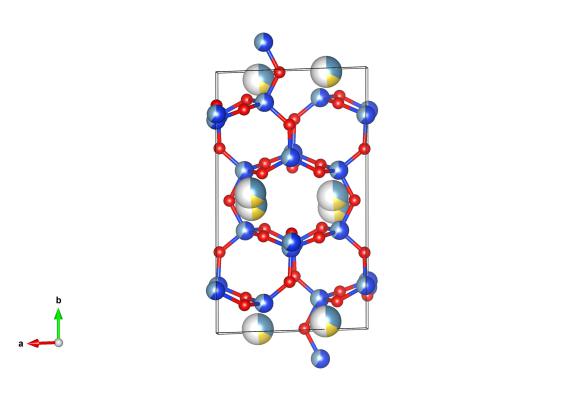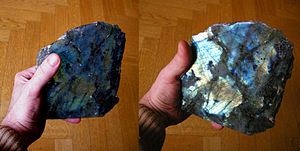A play on colours – Labradorite
What does it look like?

Image generated by the VESTA (Visualisation for Electronic and STructural analysis) software http://jp-minerals.org/vesta/en/
What is it?
We've already introduced feldspars as a group of minerals that make up much of the crust of our planet. Today we're looking at one in detail – Labradorite. This is the dominant feldspar mineral found in most basalt rocks (cooled lava) across the planet. In this mineral the atoms found in the channels between the tetrahedra are calcium and sodium. As you can see from the pie-chart-like atom representation, we can only understand this mixture averaged across the whole sample.

Adularescence or labradorescense on a specimen of labradorite. Picture from http://commons.wikimedia.org/wiki/User:Prokofiev
One of the special things about this particular feldspar is that, in large enough samples, it can exhibit 'labradorescence' a pretty play on colours. This occurs when different intergrowths of crystals within the mineral form in just the right way to diffract light.
Where did the structure come from?
The structure we have drawn comes from the X-ray diffraction study by Wenk et al. They also compared the results of this to a neutron diffraction experiment, as this method allows better distinguishing between the aluminium and silicon atoms in the structure. It is #9000744 in the Crystallograpy Open Database.






